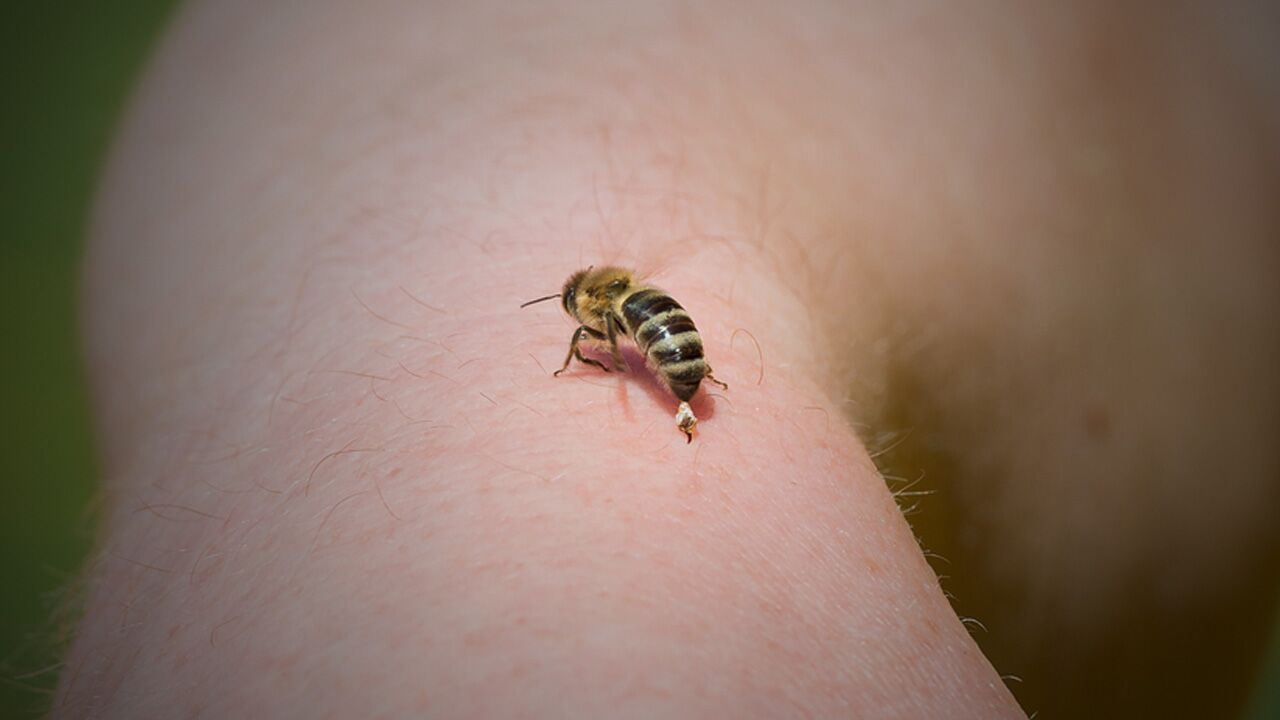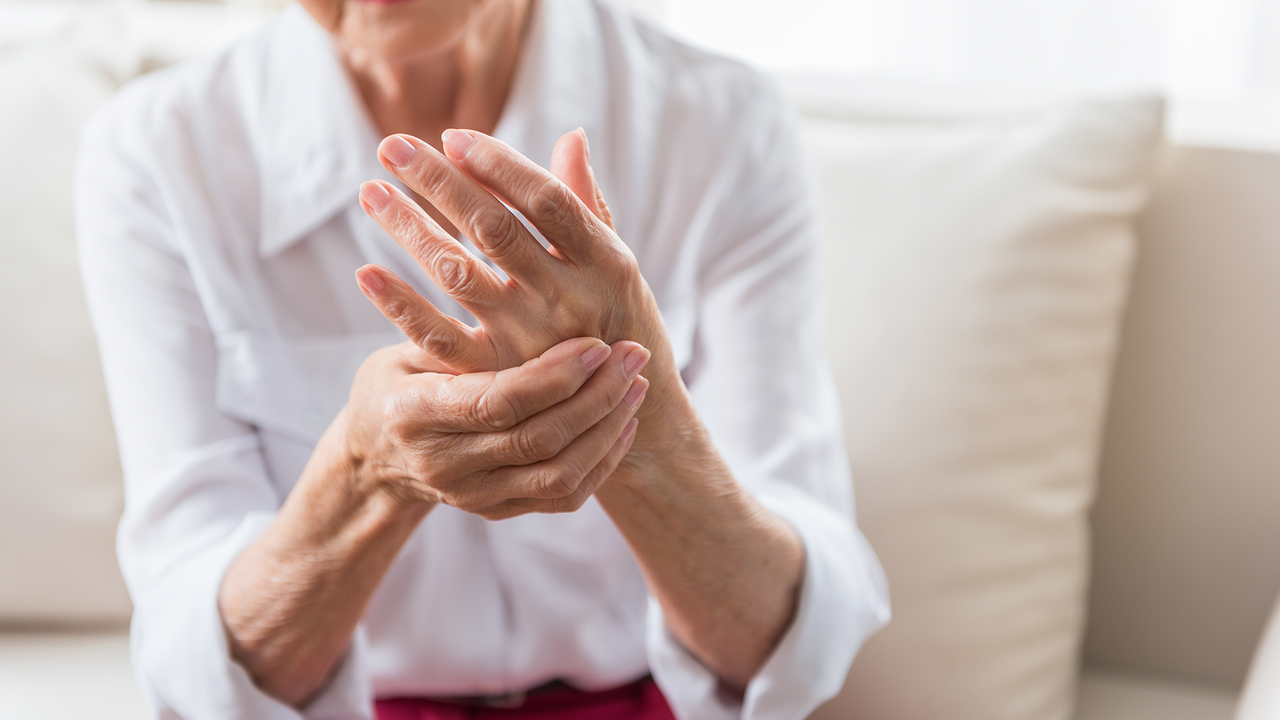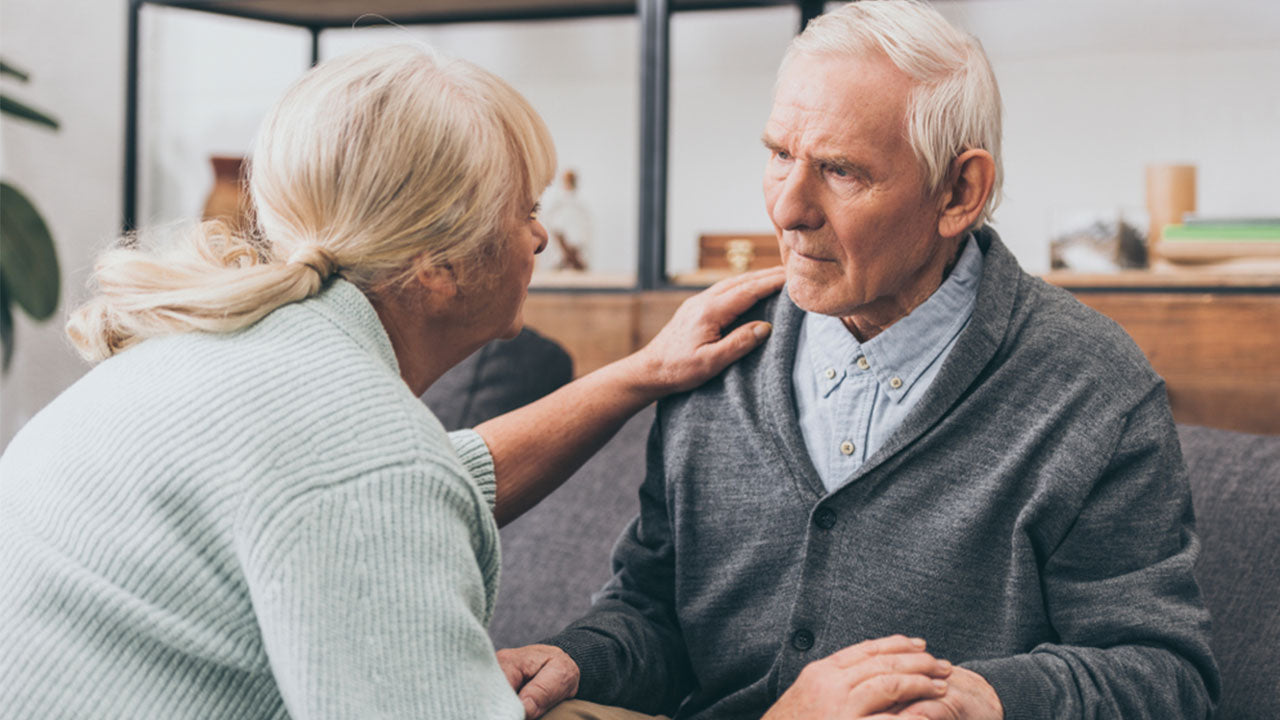Treating Bee Stings: How to Take the Sting Out
 By: by Amino Science
By: by Amino Science

You hear the buzz, and then…ouch! You’ve been stung by a bee. For most people, bee stings cause a mild reaction and are just a temporary nuisance, but a sting from these flying insects can still pack a punch. What do you do when you’re stung by a bee and what remedies provide relief from the itching and pain? We’ll take a look at what you should do for treating bee stings and taking the sting out!
Why Bees Sting
Bees are not out looking to find someone or something to sting. The stinger is strictly used when the bee believes its colony is under attack or its life is in danger. Both wasps and bees will sting when a person or animal comes near their nest or hive. The risk of becoming stung increases if you are using something that causes a loud noise, such as a lawn mower, or if you swat or shout at a bee, or wear bright-colored clothes. Multiple bees may also pursue you after the single bee sting if the species contains pheromones in the bee’s venom, which alerts the rest of the hive to attack.
Sting Reactions
Bee and wasp stings are fairly common, especially during the warmer months when people are outside for longer periods of time. The initial sting can be unpleasant and lead to throbbing and pain at the sting site but typically does not cause any severe reactions. The pain from a bee or wasp sting is caused by your body’s reaction to the toxin that is released from the insect’s stinger.
Your immune system kicks into action, with white blood cells arriving first on the scene to rid the body of the antigens in the bee venom. Soon after you are stung, your body releases serotonin and histamine that cause an allergic reaction at the sting site. As your body continues its fight, the site becomes inflamed and swollen and may be painful and hot to the touch. You can often spot a small white dot in the middle of the sting site where the stinger went into your skin. For most people, the swelling and pain subside within hours of being stung, especially if it is not on an area that is ultra sensitive, like the face, ears, or neck.
Bee vs. Wasp Stings
The main reason bees only sting as a last resort is that they have barbed stingers that are torn off upon contact and they will die soon after stinging. If they believe it’s a matter of life or death for their hive or themselves, they will go into attack mode. You may notice you must remove the stinger or venom sac after being stung, since it is often left behind after the bee flies away.
Like bees, wasps have a stinger that contains venom but their stingers do not have barbs and usually retract upon stinging. Since the stinger remains intact, a wasp, as well as other stinging insects like hornets and yellow jacket wasps, can sting you multiple times.
Allergic Reactions
For most people, when an insect stings it's just a nuisance, but for others, it can be serious and have life-threatening complications. Some individuals will experience substantial swelling or redness at the sting site due to a more serious reaction. For those who are highly allergic, a bee or wasp sting can turn into a life-threatening situation quickly. A bee or wasp allergy can cause anaphylaxis (wheezing and difficulty breathing), rapid heartbeat, hives, low blood pressure, swelling of the throat or tongue, and dizziness or fainting. In incidences of anaphylactic shock, emergency medical care is needed to counteract the severe allergic reaction.

Bee Sting Treatments
Unless you have a bee sting allergy, most bee and wasp stings can be treated at home with over-the-counter products or home remedies.
If you’re stung by a bee, gently extract the stinger using your nails or the firm edge of a credit card. Avoid using tweezers, which can drive more toxic venom into the wound. Toxins can still be released from the bee's stinger if left in place so prompt removal is important.
Using soap and water, wash the area well and apply an astringent or antiseptic with a cotton ball. Next grab an ice pack, ice cube, or cold compress and hold over the sting site to calm inflammation. For additional treatment of bee and wasp stings, you can find several products at your local drugstore or gather a few items around your house to alleviate the pain and provide bee sting itch relief.
Over-the-Counter Treatments
- Oral antihistamine: Benadryl or Claritin can help relieve the swelling and itching that accompanies a bee sting.
- Tylenol: To relieve pain and swelling, take ibuprofen or acetaminophen as directed.
- Hydrocortisone cream: An over-the-counter cream like 1% hydrocortisone cream can be applied topically to curb itching and calm irritation.
- Calamine lotion: Used to treat many skin rashes, bug bites, and irritations, calamine lotion can relieve itching and help to dry up the site quickly.
- Heal: This amino acid supplement helps to maintain a healthy inflammatory response, so you can heal quicker from a bee sting. Purchase Heal here.
Home Remedies
- Honey: It’s a bit ironic that honey can soothe a bee sting, but it is very effective at helping the wound heal and relieving the pain and itching. Spread honey over the wound and cover with a loose bandage; leave on for up to an hour and then rinse.
- Apple cider vinegar: To help neutralize the toxin in the bee sting, apply an apple cider vinegar compress to the sting site and let sit for several minutes.
- Toothpaste: To soothe the burn that can follow a bee sting, apply a squirt of white toothpaste to the wound and let dry.
- Meat tenderizer: Papain, an enzyme in meat tenderizer, appears to cause the protein responsible for itching and pain to break down. Apply a mixture of 1:4 meat tenderizer to water and leave on the sting site for half an hour.
- Baking soda: A baking soda paste made with water is a traditional anti-itch remedy for everything from bee stings to mosquito bites. Cover with a bandage for 15 minutes.
- Aspirin paste: A topical paste made from an aspirin tablet and water is helpful for reducing pain.
- Tea tree oil: A natural antiseptic, tea tree oil can help ease bee or wasp sting pain. Add a few drops to coconut oil and apply to the irritated area.
- Ammonia: Effective at breaking down the protein in bee venom, ammonia can offer quick relief and help reduce swelling.
- Aloe vera: From relieving sunburns to skin irritations, aloe vera can help soothe a bee sting. Slice a leaf from the aloe plant to extract the gel or buy pure aloe from the store and apply to the sting site.
- Witch hazel: When witch hazel is used to treat a sting, it can relieve itching, pain, and inflammation.
- Activated charcoal: Charcoal should be in everyone’s first aid kit since this age-old remedy can immediately provide pain and swelling relief. Found in health food stores, the contents of charcoal capsules can be mixed with water to form a paste. Spread the paste over the sting site and gently cover. Repeat this throughout the day until symptoms are relieved.
Preventing Bee Stings
If you know you’ll be spending time outdoors, take these steps to reduce your risk of a bee sting:
- If bees fly near you or begin to swarm around you, this is a warning. Slowly and calmly leave the area without swatting or swinging your arms.
- If you kick or knock into a hive or nest, immediately run away as quickly as possible. If you can get to an enclosed area, do so.
- Avoid going outside barefoot.
- Do not wear bright colors such as yellow or red.
- Do not disturb a hive if you come across one.
- Keep food and soda covered during picnics.
- Drive with windows up.
- Avoid open garbage cans.
- If you have been prescribed an epinephrine auto-injector (an EpiPen), always have two with you at all times.
Bee stings can be painful, whether you’re allergic to bees or not. If a bee or wasp stings you or someone you know, try to remain calm and get to a place where you can treat the sting as soon as possible to lessen the effects and speed up relief.

Up to 25% off Amino
Shop NowTAGS: conditions natural cures
Join the Community
Comments (0)
Most Craveable Recipes




 833-264-6620
833-264-6620



















